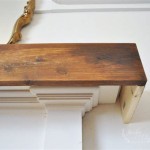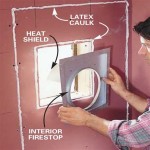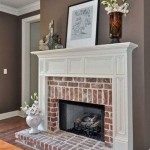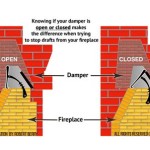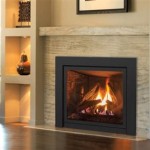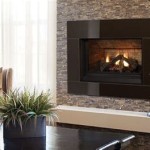Reclaimed Fireplace Mantels: A Sustainable and Stylish Choice
The fireplace has long been a focal point in homes, providing warmth and a sense of gathering. The mantelpiece, situated above the fireplace opening, serves as both a decorative element and a functional shelf. While new mantels are readily available, reclaimed fireplace mantels offer a unique blend of history, character, and environmental responsibility, making them an increasingly popular choice for homeowners seeking to add a distinct touch to their living spaces.
Reclaimed wood, in general, refers to wood that has been salvaged from old structures, such as barns, factories, and homes, rather than being harvested from living trees. This practice has gained traction as awareness of deforestation and sustainable building practices has grown. When applied to fireplace mantels, reclaimed wood brings with it a story, a past life etched into its grain and texture.
The aesthetic appeal of reclaimed fireplace mantels is multifaceted. The wood often exhibits a rich patina, developed over decades of exposure to the elements and wear. This patina is impossible to replicate with modern staining techniques. Nail holes, saw marks, and slight imperfections are not considered flaws but rather celebrated as evidence of the wood's history, adding to its authenticity and charm.
Beyond their aesthetic value, reclaimed fireplace mantels contribute to environmental sustainability. By repurposing wood that would otherwise be discarded, the demand for newly harvested timber is reduced. This helps to preserve forests, protect biodiversity, and mitigate the effects of climate change. Furthermore, the process of reclaiming wood often involves less energy expenditure compared to the manufacturing of new wood products.
The selection of a reclaimed fireplace mantel requires careful consideration. Factors such as the wood species, dimensions, style, and condition must be evaluated to ensure compatibility with the existing fireplace and overall décor. Professional installation is also recommended to ensure safety and proper functionality.
The Allure of Reclaimed Wood Character
One of the primary reasons homeowners choose reclaimed fireplace mantels is the distinctive character inherent in the wood. Unlike mass-produced mantels made from new lumber, reclaimed mantels possess a unique story. The wood may originate from a barn that stood for a century, a factory that witnessed the Industrial Revolution, or a home filled with generations of memories. This history is palpable in the wood's texture, color, and imperfections.
The patina of reclaimed wood is a key element of its character. Over time, exposure to sunlight, moisture, and air causes the wood to develop a rich, complex color that is difficult to replicate artificially. This patina can range from subtle variations in tone to dramatic contrasts between light and dark areas. The wood’s surface may also exhibit a unique sheen, adding to its visual appeal.
Nail holes, saw marks, and other imperfections are not viewed as defects in reclaimed wood but rather as evidence of its past. These marks tell a story about the wood's original purpose and the processes it underwent. They add a sense of authenticity and craftsmanship that is often lacking in new wood products. Some homeowners even seek out mantels with specific types of imperfections to enhance their desired aesthetic.
The species of wood used in reclaimed fireplace mantels can also contribute to their character. Different wood species have distinct grain patterns, colors, and textures. For example, reclaimed oak may exhibit a tight, swirling grain pattern, while reclaimed pine may have a more open and rustic appearance. The choice of wood species can significantly impact the overall look and feel of the mantel.
The shape and size of the reclaimed wood also play a role in its character. Reclaimed mantels often come in irregular shapes and sizes, reflecting the original dimensions of the salvaged lumber. This can add a sense of uniqueness and individuality to the mantel, setting it apart from standard-sized mantels made from new wood.
The presence of knots in the wood can further contribute to its character. Knots are naturally occurring imperfections that add visual interest and texture to the wood's surface. Reclaimed wood may have a greater number of knots compared to new wood, adding to its rustic charm.
The overall effect of these characteristics is a fireplace mantel that is unlike any other. Each reclaimed mantel is a one-of-a-kind piece with its own unique history and personality. This individuality is highly valued by homeowners who seek to create a distinctive and memorable living space.
Sustainability and Environmental Benefits
The environmental benefits of using reclaimed fireplace mantels are significant. By choosing reclaimed wood over new lumber, homeowners contribute to the conservation of forests and the reduction of greenhouse gas emissions. The production of new lumber requires the felling of trees, which can lead to deforestation, habitat loss, and soil erosion. Reclaimed wood, on the other hand, utilizes existing resources, minimizing the need for new logging operations.
The process of reclaiming wood also typically requires less energy compared to the manufacturing of new wood products. The felling of trees, transportation of logs, and processing of lumber all consume significant amounts of energy. Reclaiming wood involves relatively simple processes such as cleaning, sanding, and refinishing, which require less energy input.
The use of reclaimed wood can also reduce the amount of waste sent to landfills. When old buildings are demolished or renovated, large quantities of wood are often discarded. Reclaiming this wood diverts it from landfills, where it would decompose and release methane, a potent greenhouse gas. By repurposing this wood into fireplace mantels, it is given a new life and its environmental impact is minimized.
Choosing a reclaimed fireplace mantel also supports sustainable forestry practices. By reducing the demand for new lumber, it lessens the pressure on forests to be harvested unsustainably. This encourages forest managers to adopt more responsible harvesting practices that protect biodiversity and maintain the long-term health of forests.
Reclaimed wood often boasts superior durability compared to new lumber. Older trees, from which reclaimed wood is often sourced, tend to have denser wood with tighter grain patterns. This makes reclaimed wood more resistant to rot, decay, and insect infestation. A reclaimed fireplace mantel can therefore be a long-lasting and environmentally sound investment.
The use of reclaimed fireplace mantels can also contribute to a healthier indoor environment. New lumber can sometimes contain volatile organic compounds (VOCs) that are released into the air over time. Reclaimed wood, on the other hand, has typically already off-gassed most of its VOCs, making it a safer choice for indoor use.
Furthermore, the sourcing of reclaimed wood often supports local economies. Reclaiming wood typically involves small businesses and independent craftsmen who specialize in salvaging, processing, and selling reclaimed lumber. By purchasing a reclaimed fireplace mantel, homeowners can support these local businesses and contribute to the economic vitality of their communities.
Selection and Installation Considerations
Selecting a reclaimed fireplace mantel requires careful consideration of several factors. The dimensions of the mantel must be compatible with the fireplace opening and the surrounding wall space. The style of the mantel should complement the overall décor of the room. The condition of the wood must be assessed to ensure its structural integrity. And the species of wood should be chosen based on its aesthetic appeal and durability.
Before purchasing a reclaimed fireplace mantel, it is important to measure the dimensions of the fireplace opening and the surrounding wall space. The mantel should be wide enough to extend beyond the sides of the fireplace opening and tall enough to provide adequate clearance above the firebox. The depth of the mantel should also be considered, as it will affect the amount of space available for displaying decorative items.
The style of the mantel should complement the overall décor of the room. Reclaimed mantels come in a variety of styles, ranging from rustic and farmhouse to modern and industrial. The choice of style should be guided by the existing architectural features of the room and the homeowner's personal preferences.
The condition of the wood must be carefully assessed to ensure its structural integrity. Look for signs of rot, decay, insect infestation, or significant warping. It is important to choose a mantel that is in good condition and will not pose a safety hazard. Minor imperfections, such as nail holes and saw marks, are generally acceptable and can add to the mantel's character.
The species of wood should be chosen based on its aesthetic appeal and durability. Different wood species have distinct grain patterns, colors, and textures. Oak, pine, and maple are popular choices for reclaimed fireplace mantels. Oak is known for its strength and durability, pine for its rustic charm, and maple for its smooth texture and light color.
Professional installation is highly recommended for reclaimed fireplace mantels. Proper installation is essential to ensure the safety and functionality of the mantel. A qualified contractor can assess the structural integrity of the wall, ensure that the mantel is properly supported, and make any necessary adjustments to ensure a secure and level installation.
Before installation, the reclaimed mantel should be thoroughly cleaned and treated to protect it from moisture and insect infestation. A water-resistant sealant can be applied to the wood's surface to prevent moisture damage. Insecticidal treatments can also be applied to protect the wood from pests. It's crucial to verify that any treatments are safe for indoor use and compatible with the fireplace’s heat output.
Finally, consider the fireplace's heat output and ensure the mantel is installed at a safe distance from the firebox opening. Building codes often specify minimum clearances for combustible materials near fireplaces. Following these guidelines is crucial to prevent fire hazards. A heat shield may be necessary if the mantel is installed too close to the firebox.

Rustic Reclaimed Fireplace Mantel Century Old Wood Beam Personalized Sizes Shades With Corbels Real

Reclaimed Wood Mantels True American Grain

Artisan Crafted Rustic Fireplace Mantel 100 Year Old Reclaimed Wood

Reclaimed Mantel Dakota Timber Co Fireplace Mantels

Resawn Reclaimed Wood Faux Beam Mantels

Reclaimed Wood Mantels Whole Log Nc

Wood Fireplace Mantels Reclaimed Barn

Olde Wood 8 X Reclaimed Mantel Shelfhand Hewn 95 Long Teak Mantels Fireplace

Reclaimed Fireplace Mantel Beams The Forest

Rough Sawn Reclaimed Wood Faux Beam Mantels
Related Posts

